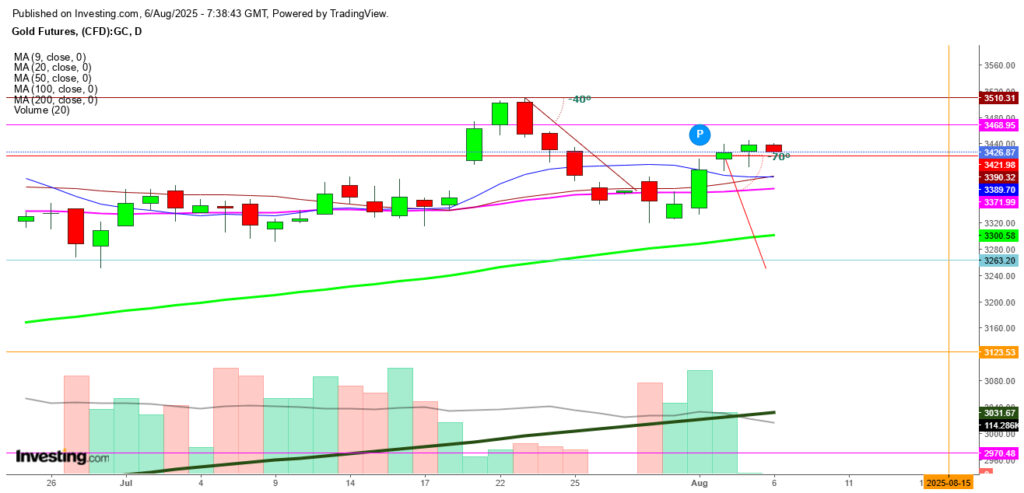In the intricate world of financial markets, the movements of various indices and commodities can often seem like a cryptic dance, influenced by policy decisions, geopolitical events, and economic data. At the heart of recent discussions is the anticipation surrounding the United States’ next moves, particularly those by its President, Donald Trump. As we delve into an analysis of recent trends, it’s crucial to unpack the broader context to provide clarity and insight, especially for those who might not have been closely following these developments.
President Trump, known for his unorthodox approach to both politics and economics, has once again captured the spotlight. The impending decision to appoint a new member to the Federal Reserve’s Board of Governors looms over the markets, sparking a mixture of anticipation and concern. This move comes at a time when the trade tariff tussle, a signature strategy of Trump’s administration to renegotiate terms deemed unfair to the U.S., continues to cast a long shadow over the global economy.
The effect of these tariffs has begun to manifest in ways that are both subtle and significant. Recent economic data reveals a stagnation in certain economic indicators for July, with input costs soaring to levels not seen in nearly three years. This uptick in costs highlights the direct impact of tariffs, which, aside from reshaping trade dynamics, also start to nibble at corporate profitability. Such economic indicators are crucial in understanding the broader implications of trade policies, as they often serve as the canary in the coal mine for future financial health.
As stakeholders anxiously await the President’s announcement on the Federal Reserve appointment, there’s an underlying fear that this decision could further politicize the Federal Reserve. Traditionally seen as an apolitical entity, the Federal Reserve plays a critical role in shaping U.S. monetary policy, and any shift towards partisan decision-making could have profound implications for its credibility and the broader financial landscape.
Against this backdrop, the gold market has become a focal point for investors seeking refuge or speculating on future moves. Gold futures, in particular, have showcased a notable resilience, managing to stay afloat above critical support levels despite pressures that could have otherwise led to a decline. The technical analysis of gold futures suggests a battle between bullish optimism and bearish pressures, with key indicators like the daily moving averages providing insight into potential future movements.
For instance, if gold futures manage to maintain their stance above immediate support levels, it could signal a temporary stay of execution against bearish forces. However, a breach below significant markers such as the 50 and 100-day moving averages could trigger a sharper correction, highlighting the perpetual dance between various market forces.
Parallel to the narrative in the gold market is the performance of U.S. Dollar Index futures. Despite encountering resistance and trading within a confined range, there’s potential for a breakout, inspired perhaps by the broader economic narrative including fiscal policies and trade dynamics. A sustained move above key resistance levels could bolster the Dollar’s stance, impacting a range of correlated markets, including gold.
The interplay between the U.S. dollar and gold is a classic example of the complex yet fascinating dynamics that govern financial markets. As the week progresses, all eyes will remain fixed on the unfolding developments, particularly President Trump’s decisions regarding tariffs and the Federal Reserve appointment. These will not only shape the immediate market reactions but also set the tone for medium to long-term trends.
In conclusion, as we navigate these turbulent times, the overarching narrative is one of uncertainty, anticipation, and the ever-present influence of geopolitical manoeuvres on financial markets. Whether it’s the anticipation surrounding the Federal Reserve’s new appointee or the ongoing saga of trade tariffs, the outcomes of these events will undoubtedly leave an indelible mark on the global economic landscape.
It’s important, however, to approach these insights with caution. The complexity of financial markets means that predictions and analyses, while informed, are not infallible. Stakeholders should, therefore, make investment decisions based on a comprehensive view of market conditions, personal risk tolerance, and in consultation with financial advisors.
As we continue to monitor these developments, the intertwining of policy decisions, economic data, and market reactions provides a rich tapestry for understanding the broader economic implications of current events. Through careful analysis and informed discourse, we can navigate the uncertainties of today’s financial world with a clearer direction.


